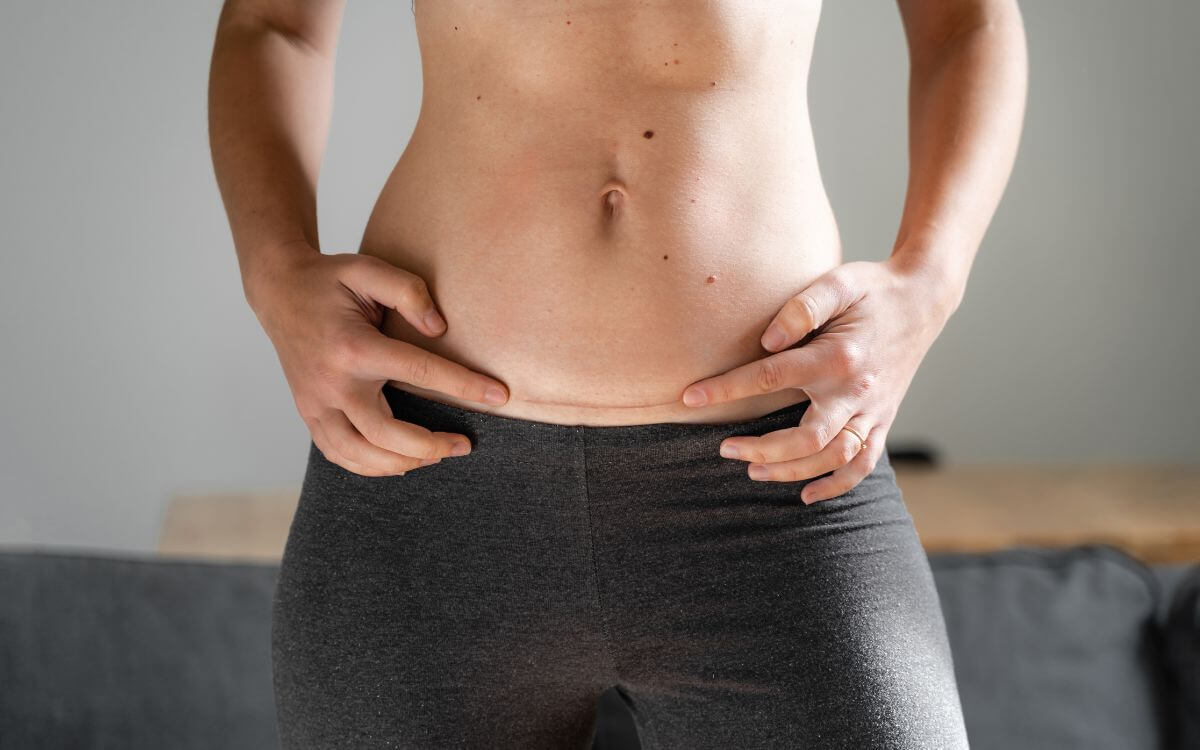Pictures of stomach after hysterectomy.
Let me start by explaining that my wife has stage 4 deep infiltrating endometriosis, and as I write this, she waits for her second operation. Since she began to consider the possibility of having a hysterectomy, we both needed to educate ourselves on the topic a little bit more.
I decided to do my research and found that women are very interested in how their stomachs are going to possibly look after they undergo a hysterectomy.
Here’s what I found out:
Pictures of the stomach after a hysterectomy can be alarming to some women who are considering or have undergone the surgery which is a common surgical procedure that involves removing the uterus.
There are several reasons why a woman may need a hysterectomy, including fibroids, endometriosis, or cancer.
While a hysterectomy can be a life-saving procedure, it can also cause changes to a woman’s body. One of the most noticeable changes is the appearance of the stomach after the surgery. In this article, we will discuss what to expect in terms of the stomach’s appearance after a hysterectomy and how to care for yourself during the recovery process.
- What are the types of hysterectomies?
- Do types of hysterectomies make the stomach look different?
- After a hysterectomy, what fills the space?
- What to expect 4 months after hysterectomy?
- What to expect after a hysterectomy?
- Caring for yourself after a hysterectomy.
- How much does a hysterectomy cost?
- Conclusion on pictures of the stomach after hysterectomy.
- My advice for husbands after hysterectomy.
What are the types of hysterectomies?
There are several types of hysterectomy that may be performed, depending on the individual’s health and medical needs. These include:
- Total hysterectomy.
- Partial hysterectomy.
- Radical hysterectomy.
- Laparoscopic hysterectomy.
- Vaginal hysterectomy.
What is a total hysterectomy?
This is the most common type of hysterectomy and involves the complete removal of the uterus and cervix. It may be recommended in cases of uterine fibroids, endometriosis, or cancer. Total hysterectomy can be performed through different methods, such as through the abdomen or the vaginal canal, depending on the patient’s medical needs.
What is a partial hysterectomy?
This procedure involves removing the uterus while leaving the cervix intact. It is typically recommended for women who have certain types of noncancerous growths in the uterus, such as fibroids. The cervix is left in place because it provides support for the vagina and can help to maintain sexual function.
What is a radical hysterectomy?
This type of hysterectomy is usually performed in cases of cervical or uterine cancer. It involves the removal of the uterus, cervix, and upper part of the vaginal muscle, as well as nearby lymph nodes. In some cases, the ovaries and fallopian tubes may also be removed. Radical hysterectomy is a more extensive surgery than other types of hysterectomy and may require a longer recovery time.
What is a laparoscopic hysterectomy?
This is a minimally invasive procedure that involves making small incisions in the abdomen to remove the uterus. A laparoscope, which is a thin, lighted tube with a camera, is inserted through one of the incisions to allow the surgeon to see the uterus and surrounding organs. Laparoscopic hysterectomy can be performed as a total or partial hysterectomy.
What is a vaginal hysterectomy?
This procedure involves removing the uterus through the vaginal canal, without making any incisions in the abdomen. It is often recommended for women who have uterine prolapse, which is a condition in which the uterus drops into the vaginal canal. Vaginal hysterectomy is typically less invasive than other types of hysterectomy and can result in a shorter recovery time.
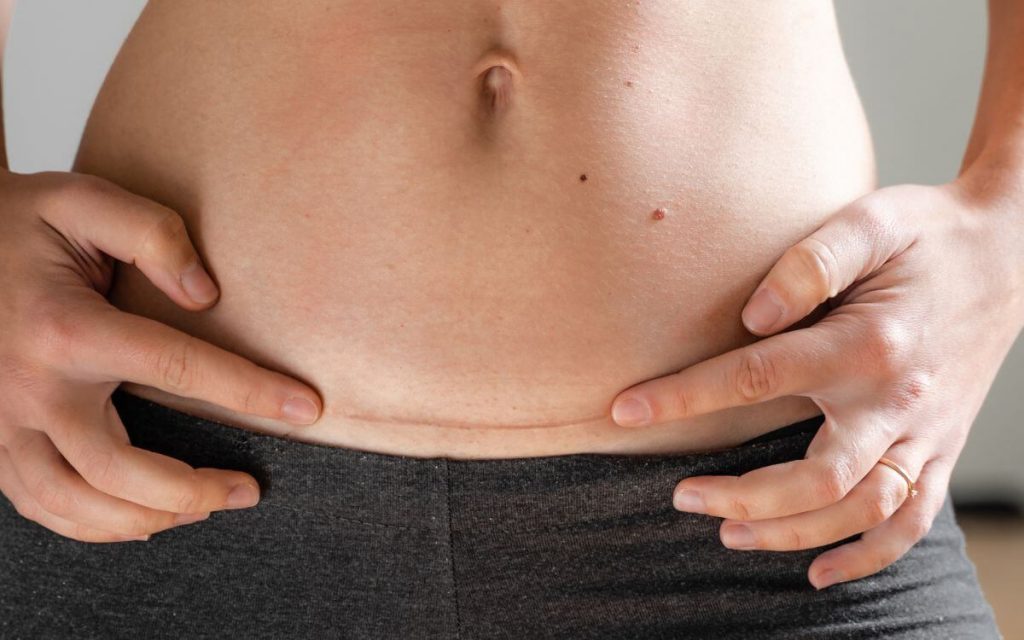
Do types of hysterectomies make the stomach look different?
Yes, the type of hysterectomy performed can affect the appearance of the stomach after the surgery. In general, more invasive procedures, such as radical hysterectomy or open abdominal hysterectomy, may result in a larger scar and more visible changes to the abdomen.
With a total abdominal hysterectomy, for example, the incision is typically made horizontally across the lower abdomen, which can result in a larger scar. In some cases, the incision may be vertical, which can lead to more visible scarring.
In contrast, minimally invasive procedures, such as laparoscopic hysterectomy or vaginal hysterectomy, typically result in smaller incisions and less scarring.
Laparoscopic hysterectomy involves making small incisions in the abdomen, which can leave small scars that are less noticeable. A vaginal hysterectomy is performed entirely through the vaginal muscle, so there are no visible incisions on the abdomen.
It is important to note that the appearance of the stomach after a hysterectomy can vary depending on a number of factors, including the individual’s body type, the amount of tissue removed during surgery, and the method of closure used by the surgeon.
Additionally, the healing process can take time and the appearance of scars can improve over time with proper care and treatment.
After a hysterectomy, what fills the space?
Being a dancer, my wife always wondered if she lost her core strength if she was to undergo a hysterectomy.
Here are some basic facts…
After a hysterectomy, the space where the uterus used to be is typically filled with other organs and tissues in the pelvic area. The bladder and bowel can shift slightly to fill the empty space, and the vaginal cuff, which is the top part of the vaginal muscle, is usually closed with stitches.
Over time, the body may also form scar tissue in the area to further fill the space. The amount of space that is filled and the specific organs and tissues that shift can vary depending on the type of hysterectomy and other factors specific to the individual.
What to expect 4 months after hysterectomy?
After a hysterectomy, recovery time can vary depending on the individual and the type of surgery performed.
Generally, it takes several weeks to several months to fully recover from a hysterectomy. By four months post-surgery, most women will have experienced significant improvement in their physical and emotional well-being.
At four months after a hysterectomy, most women can expect to have fully recovered from the surgery itself. Any incisions made during the procedure should have fully healed and any post-operative pain or discomfort should have subsided. Most women should also be able to resume their normal daily activities, including exercise, work, and socializing.
Women who have had a total or radical hysterectomy will no longer experience menstrual periods, which can bring relief from any symptoms associated with menstruation, such as cramping, bloating, and mood changes.
However, some women may still be experiencing some symptoms related to the hormonal changes that occur after a hysterectomy. For example, women who have had their ovaries removed during the procedure may experience symptoms of menopause, such as hot flashes, night sweats, and mood swings.
It is important for women to continue to monitor their physical and emotional well-being after a hysterectomy. Regular check-ups with their healthcare provider are recommended to ensure that the recovery process is progressing as expected and to address any ongoing symptoms or concerns.
Overall, by four months after a hysterectomy, most women can expect to have fully recovered from the surgery and be experiencing relief from any symptoms associated with their condition. However, it is important to continue to monitor the overall health and well-being to ensure ongoing recovery and address any ongoing symptoms or concerns.
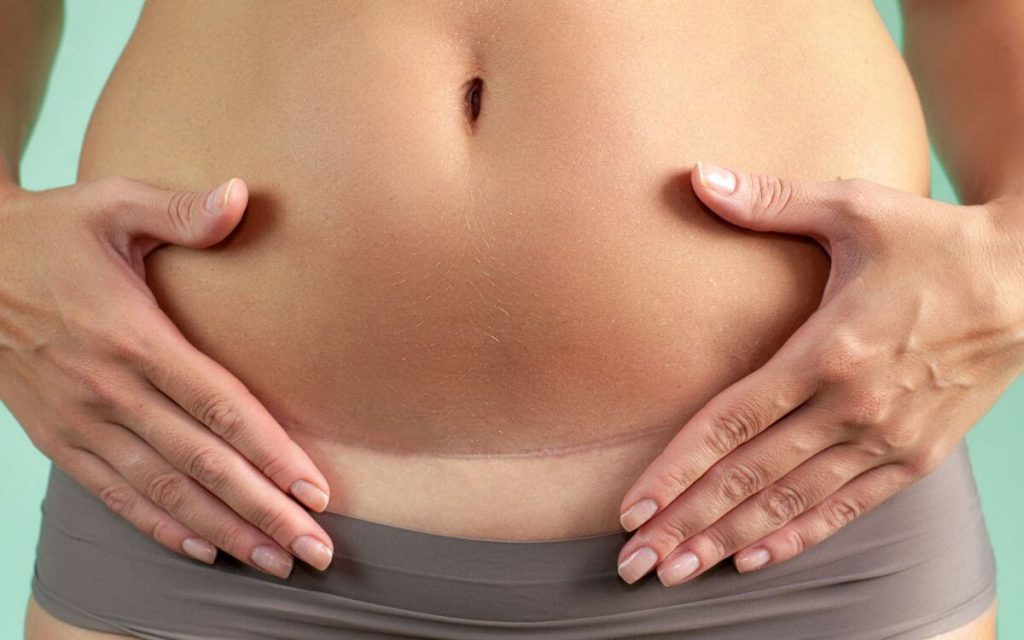
What to expect after a hysterectomy?
After a hysterectomy, it is normal to experience some abdominal swelling and discomfort. This is due to the body’s natural response to surgery, which includes inflammation and fluid retention. The amount of swelling can vary depending on the type of hysterectomy performed and the individual’s overall health.
In addition to abdominal swelling, it is also common to experience some bruising around the incision site. This bruising may be accompanied by some itching and tenderness as the incision site heals.
However, if you experience severe pain or bleeding, it is important to contact your doctor immediately.
Another change that many women experience after a hysterectomy is a change in their bowel movements. This can be due to the changes in the abdominal muscles and pelvic floor that occur after the surgery. Some women may experience constipation, while others may have diarrhea.
It is important to stay hydrated and follow any bowel management plans provided by your doctor to prevent any complications.
Caring for yourself after a hysterectomy.
After a hysterectomy, it is important to give your body time to heal. This means avoiding any strenuous activities, such as heavy lifting or exercise, for several weeks after the surgery. It is also important to avoid any activities that put pressure on the abdomen, such as coughing, sneezing, or straining.
In addition to rest, it is also important to maintain a healthy diet and stay hydrated. This can help promote healing and prevent constipation. Some women may also benefit from pelvic floor exercises or physical therapy to help regain strength and flexibility in the pelvic region.
It is also important to follow any post-operative instructions provided by your doctor. This may include taking medication to manage the pain and prevent infection, as well as following a specific wound care regimen to promote healing.
How much does a hysterectomy cost?
The cost of a hysterectomy can vary depending on a number of factors, including the type of hysterectomy, the location and type of healthcare provider performing the surgery, and the patient’s insurance coverage.
According to the Healthcare Cost and Utilization Project, the average cost of a hysterectomy in the United States is around $11,000 for a vaginal hysterectomy and $15,000 for an abdominal hysterectomy. However, these costs can vary widely depending on geographic location and the specific details of the procedure.
Patients with insurance coverage may have a lower out-of-pocket cost, depending on their individual insurance plan. It’s important to check with your insurance provider to understand the details of your coverage and any potential costs associated with the procedure.
For those without insurance coverage, the cost of a hysterectomy can be a significant financial burden. In some cases, hospitals and healthcare providers may offer payment plans or financial assistance programs to help make the procedure more affordable.
It’s important to explore all options and discuss any concerns about the cost with your healthcare provider.
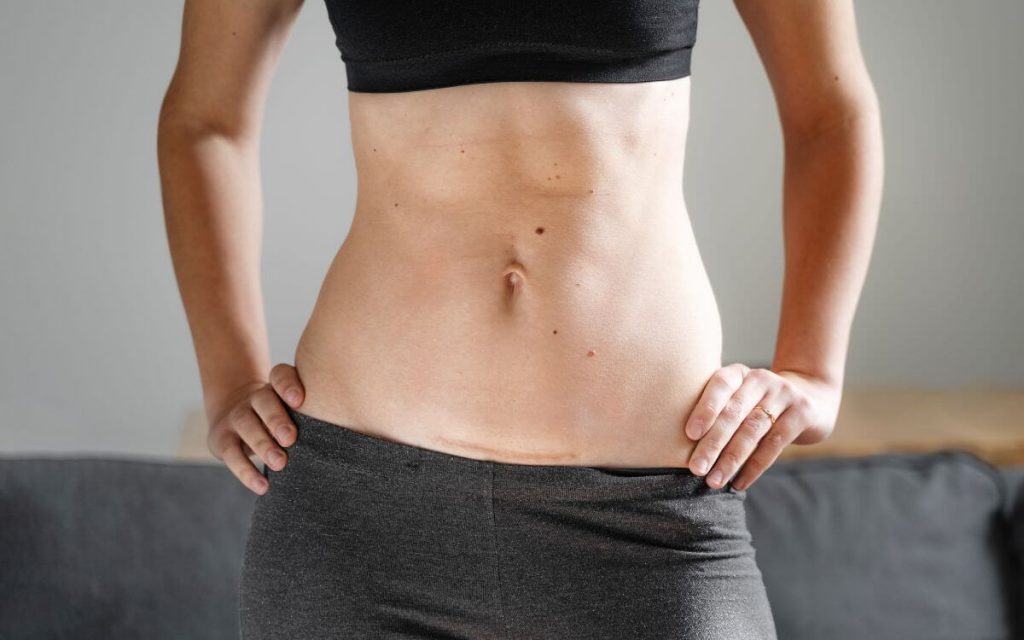
Conclusion on pictures of the stomach after hysterectomy.
My wife will probably not undergo a hysterectomy because as it is going to be her second only surgery, she is going most likely to opt-in for a laparoscopic incision surgery.
In conclusion, a hysterectomy can be a life-changing procedure for many women. While changes to the appearance of the stomach are common after the surgery, they are usually temporary and can be managed with proper care and attention.
By giving your body time to heal and following your doctor’s instructions, you can ensure a smooth recovery and a healthy future.
My advice for husbands after hysterectomy.
As someone who discussed this with my own wife, I know how important it is to be supportive and understanding during the recovery process. Here are a few tips to keep in mind:
Be patient because recovery from a hysterectomy can take time, so it’s important to be patient with your wife as she goes through the healing process.
Listen to her because your wife may be experiencing a range of emotions after the surgery, from relief to sadness to anxiety. It’s important to listen to her and be there for her as she works through these feelings.
Help with household tasks, even before she asks you to. Your wife will need to take it easy for a while after the surgery, so helping with household tasks such as cooking, cleaning, and laundry can be a big help.
Always be supportive. Your wife may be dealing with physical and emotional changes after the surgery. It’s important to be supportive and reassure her that you love her no matter what.
Most of all – educate yourself. Take the time to educate yourself about the surgery and the recovery process so you can better understand what your wife is going through.
If you want to learn more about endometriosis, I wrote an “Endo-Tool, Endometriosis for Men” e-Book.
You can get the 1st Chapter of the e-Book for FREE, and if you like it, you’ll get a Whopping 33% Discount on the Whole Book, plus discounts on other helpful tools. You have nothing to lose but a lot to gain!
The first chapter alone contains all the comprehensive medical knowledge about endometriosis, including:
- What is endometriosis?
- What are the symptoms?
- What causes endometriosis?
- What does endometriosis look like?
- What are the stages?
- What are the types?
- What is adenomyosis and how is it related to endometriosis?
- Why do some women develop severe endo and others don’t?
- Does endometriosis cause infertility?
- How is endometriosis diagnosed?
- Do types and stages affect the treatment?
- Recurrence of endometriosis after excision surgery.
FREE Chapter of “Endo-Tool”
Endometriosis e-Book for Men
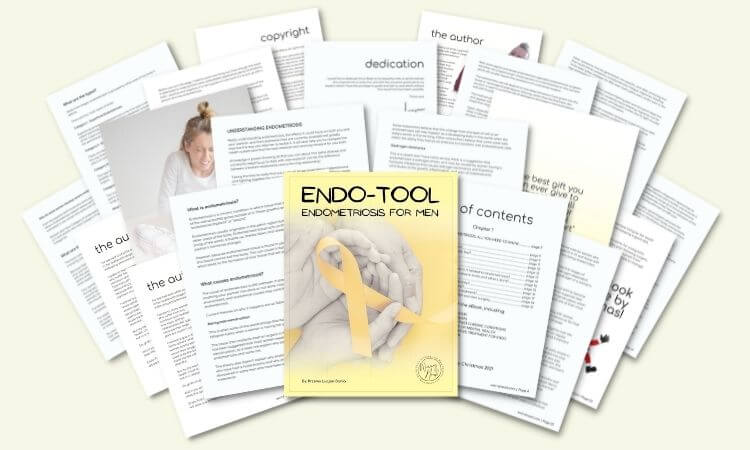
Remember, every woman’s experience with a hysterectomy is different, so it’s important to be flexible and adjust your approach based on your wife’s individual needs. By being supportive and understanding, you can help your wife through this difficult time and strengthen your relationship in the process.


About Me
Hi, I’m Lucjan! The reason why I decided to create this blog was my beautiful wife, who experienced a lot of pain in life, but also the lack of information about endometriosis and fibromyalgia for men…
